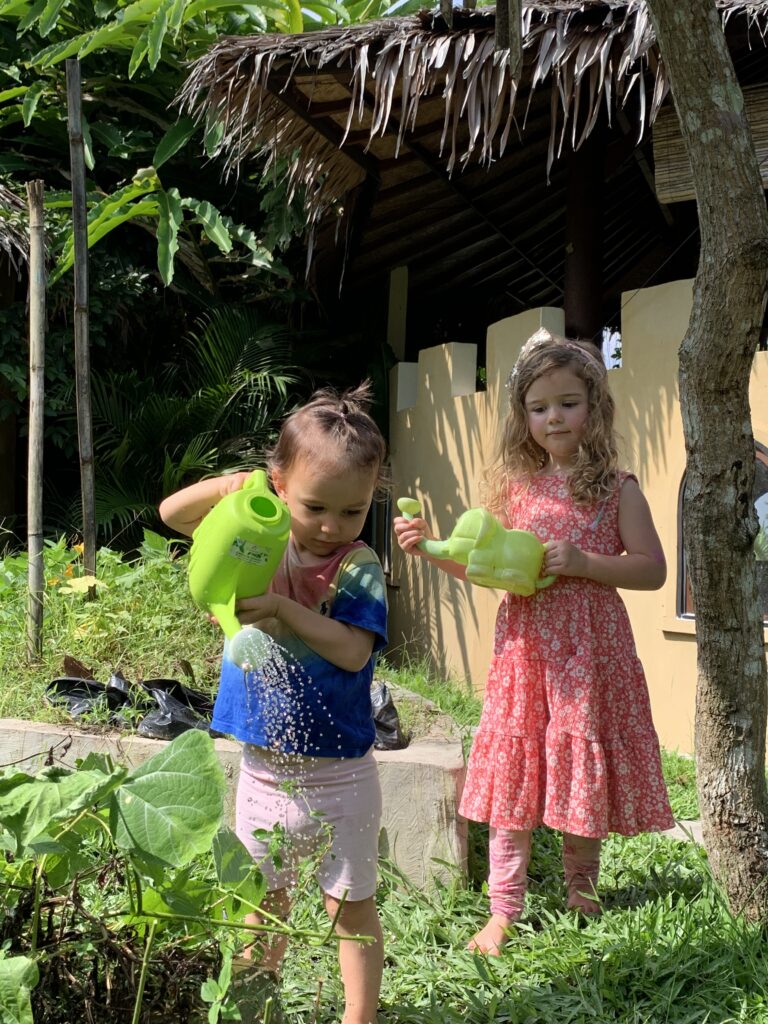Within the supportive walls of Empathy School, Mr. Jensen introduces another innovative method designed to cultivate mindfulness and emotional regulation among his students—the tree insult activity. This exercise, seemingly playful on the surface, holds profound lessons in awareness and self-control.
In this activity, students are asked to verbally ‘insult’ a tree in the schoolyard. They are encouraged to unleash their frustrations and anger towards the tree, letting out any pent-up feelings. After the exercise, the class gathers to reflect on the experience. The immediate realization for most students is that no matter what they said, the tree remained unchanged, unharmed, and indifferent to their words.
The tree insult activity serves as a metaphor for emotional resilience and the power of mindfulness. It teaches students that, much like the tree, they can observe negative emotions without being affected by them internally. This detachment is a key component of mindfulness, which involves maintaining a moment-by-moment awareness of our thoughts, feelings, bodily sensations, and surrounding environment with openness and curiosity.
Research supports the efficacy of such creative exercises in enhancing mindfulness. A study by Dr. Karen Bluth and colleagues at the University of North Carolina at Chapel Hill demonstrates that mindfulness interventions can significantly reduce symptoms of stress and anxiety among adolescents. The research highlights that through mindfulness, students learn to respond to emotional challenges with a sense of calmness and clarity rather than reacting impulsively (Bluth et al., 2016).
Additionally, a review by Zoogman et al. (2015) in the journal “Mindfulness” suggests that even brief mindfulness exercises can improve attention, reduce stress, and increase resilience in children and adolescents. These studies affirm the potential of mindfulness practices, like the tree insult activity, to transform students’ approach to emotions and stress.
Mr. Jensen leverages the insights from this activity to further discuss mindfulness techniques. “When you feel overwhelmed or upset,” he explains, “try to imagine yourself as the tree. Stand firm and observe your emotions without letting them control you. This is not about suppressing your feelings but about understanding them from a place of security and peace.”
The use of such creative and engaging exercises plays a crucial role in making abstract concepts like mindfulness tangible for middle school students. By relating emotional regulation to everyday experiences and interactions, Mr. Jensen helps his students not only grasp but also apply these practices in their daily lives. Empathy School, with its innovative approach, thus ensures that its curriculum is not just informative but transformative—equipping students with practical skills to navigate the complexities of life with mindfulness and emotional intelligence.
Continuing with the curriculum at Empathy School, Mr. Jensen introduces another critical concept: the power of reframing perspectives. This cognitive exercise is designed to help students transform how they view and respond to challenges, turning potential obstacles into opportunities for growth.
During a classroom session, Mr. Jensen presents a scenario that many students find relatable: receiving a poor grade on a test. He then guides them through the process of reframing their initial reactions.
“Let’s imagine you get your test back and the grade isn’t what you hoped for,” he starts, capturing the students’ attention. “You might initially think, ‘I’m terrible at this subject.’ But let’s reframe that thought. What if you instead thought, ‘This shows me where I need to improve. I can learn from this and do better next time.’ How does that change how you feel about the situation?”
This exercise in reframing is not just about positive thinking; it’s about finding actionable ways to approach a problem. By shifting their perspectives, students learn to see setbacks not as insurmountable roadblocks but as valuable feedback and learning opportunities. This approach fosters resilience, as it encourages students to persist and improve rather than give up in the face of adversity.
The research underscores the effectiveness of reframing and its impact on resilience. A study by Dr. Martin Seligman, known for his work on positive psychology, highlights that individuals who can reframe adversities and interpret failures as isolated and surmountable are significantly more resilient. They are better equipped to maintain motivation and continue striving towards their goals (Seligman, 1991).
Furthermore, the development of such cognitive flexibility has been linked to better problem-solving skills and lower levels of stress and depression. According to a review by Dr. Gregory Neidert and colleagues, teaching students to reframe their experiences positively can enhance their overall well-being and academic performance (Neidert et al., 2010).
Mr. Jensen emphasizes these concepts by engaging the students in group discussions where they can practice reframing various scenarios together. This not only helps individual understanding but also builds a supportive classroom environment where students learn to help each other see situations in a new light.
“Every time we face a challenge, we have a choice about how to think about it,” Mr. Jensen explains. “By choosing to see the opportunity in every difficulty, you’re building your resilience muscle. Just like any muscle, the more you use it, the stronger it gets.”
By integrating the practice of reframing into their daily lives, students at Empathy School learn to navigate life’s ups and downs with greater ease and confidence. These lessons in cognitive flexibility and resilience are vital, equipping them with the tools they need to thrive in both their personal and academic endeavors.


 Previous Post
Previous Post